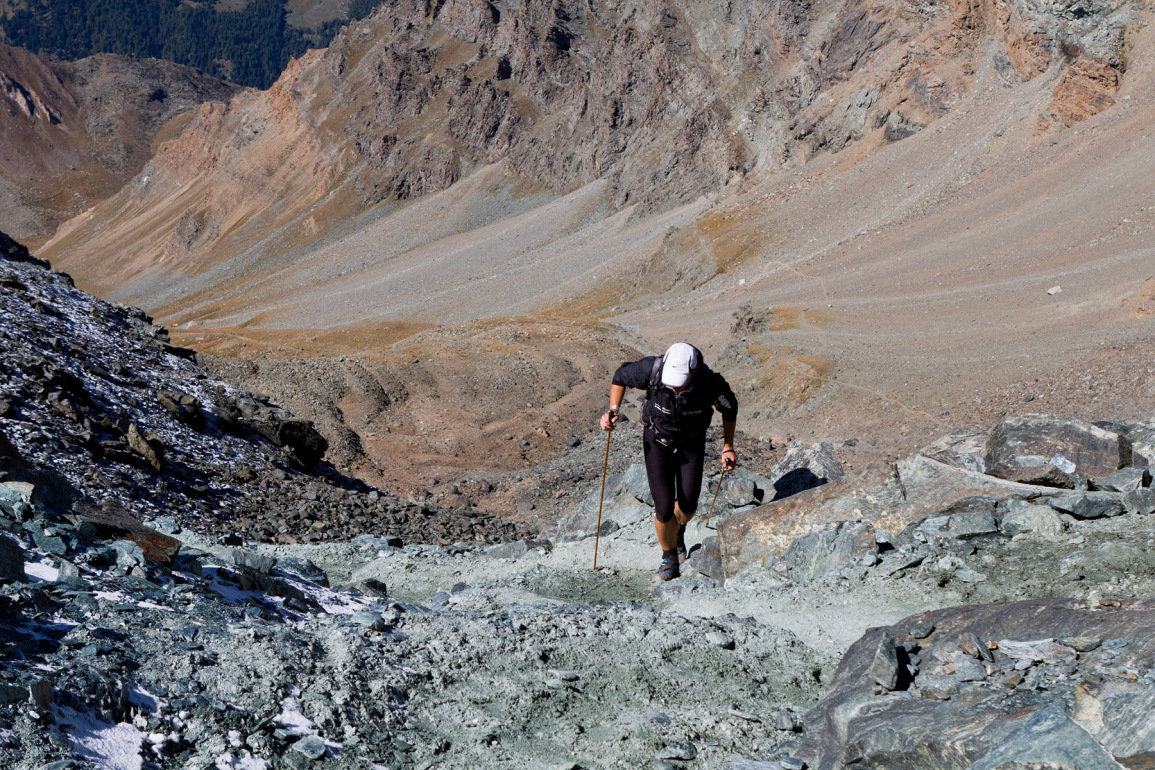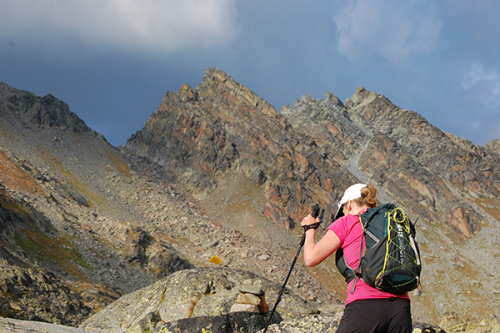
11 things first-timers should know
If you’re doing the Tor Des Geants for the first time, then the first day of the race can really mess with your head and potentially sap your confidence – especially if you’re not accustomed to multi-day alpine events. Here are a few points you should keep in mind about your first day in the race. If you know what to expect, then you can be prepared and accept these things with a smile and some tenacity. If you can be positive in the mind and strong in the body after the first day, you’re well on your way.
Dom Cadden
There is no warm-up
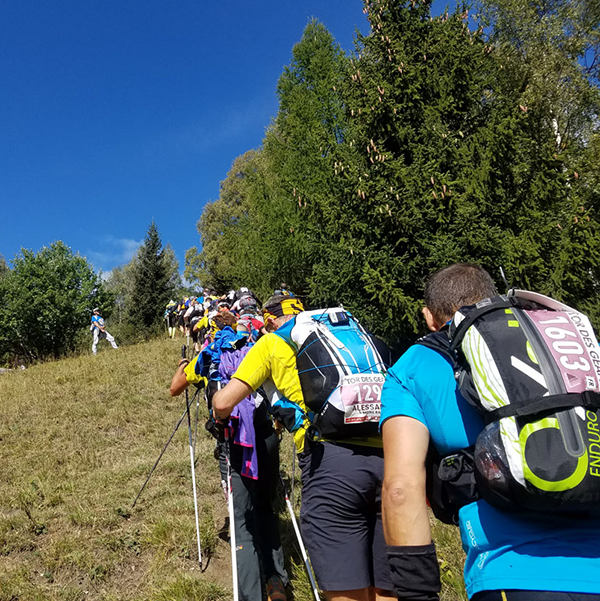
The ascent from the start is fast and hard. You’ve probably done training runs where you go some kilometres along the flat or a gradual slope, and then you begin to climb more sharply (and in the Blue Mountains near Sydney Australia, where I live, you always start at the top of the 900-1000m mountains and then go down). In this race, you run up the hill out of town on the road, then you hit a forest and go into trail, and it’s a very steep climb straight away to the mountains –1300m in 8km. Do not be shocked or disheartened if it feels difficult! (Or if the runner you’re following or supporting appears slow.)
Single-file runners & the pace trap
The field is bunched up a long way on a single track. Don’t panic, there will be places – especially as you go over peaks or crossing roads – where you can overtake people easily. However, even early stage it’s good to have an awareness of the pace of the people around you – make sure you are not settling comfortably into someone else’s pace if you think you can go a little faster and be OK. The field will really begin to spread out past the glacier on the first afternoon.
The altitude will never feel worse
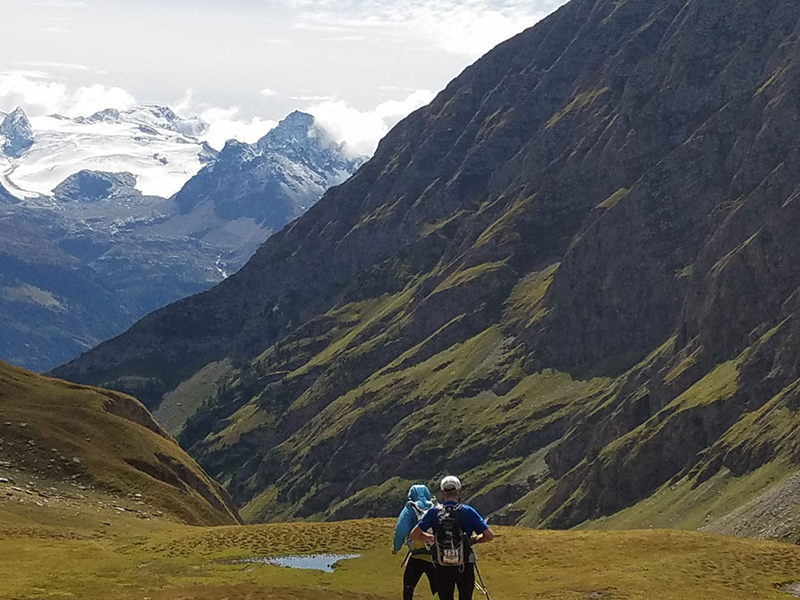
I had trained in an altitude simulation room (10 sessions in the last six weeks or so), but the altitude hits really hard on the first day – and this can sap your confidence as much as your energy.
As you know, climbing or running at altitude is a lot about pacing yourself, but on that first day, when you’re worried about getting ahead of cut-off times and the runners are all bunched up around you, you’ll probably be pushing at an uncomfortably hard pace. Don’t worry, you will adapt to the altitude a little better each day and adjust your pacing to a point where your breathing and digestion don’t suffer too much.
Personally, I really noted a big difference in my reaction to the altitude after 2700m. Above this point, I had to consciously try to breathe slower and deeper, even pausing frequently to take a really deep breath (as did many others!) – both for my lungs and to ease the pain in my head. You get tested on this in the first 24-36 hours when you go up Col Entrelor (3002m) and then Col Losson (3300m) in the second stage of the race.
Early digestion/tummy problems
Oh yeah, digestion – you can struggle even more than usual to digest food, due to lower oxygen levels. If you’re used to eating and drinking on the move, you might have to be prepared to change that. This is one big reason I think a lot of people have digestion/tummy problems – that and the fact that they rely on the foods at the checkpoint too much. There is always plenty of food at checkpoints and aid stations, and often a good variety, but you need to be a little careful of foods that you’re not accustomed to eating during a race or long run (for me, examples include very hard cheese and salami). Sure, try a little of the unfamiliar foods, but not too much – or at least not too much until you see how the foods agree with your stomach. Don’t forget, too, that you spend so much time at altitude in this race that this alone causes you to burn more calories, so you really need to make sure you are eating a lot even on the first day.
Trust the course map, not your watch
I’m not sure if GPS navigation or the watches have improved much in the last couple of years, but I know that when I did the race, both Suunto and Garmin watches gave very different distance reading to what was marked on the course maps – the watch readings were considerably higher. We’d see people get cynical, then angry, then really upset about this. (“But my watch says I’ve done 122 km – WHERE DID YOU HIDE THE LIFE BASE AT COGNE?!”)
I was told that the variation was due to the terrain. I also think it did not help that we had battery-conserving settings on our watches. I have a Suunto Ambit3 Vertical, and while the distance readings were always over (but less than many Garmins), the altitude readings were very accurate. So the lesson here is not to rely on the speed or distance readings from your watch, but instead estimate where you are on the course by your altitude reading, provided your watch is giving accurate readings against altitudes marked on the course (e.g. every Col and life base).
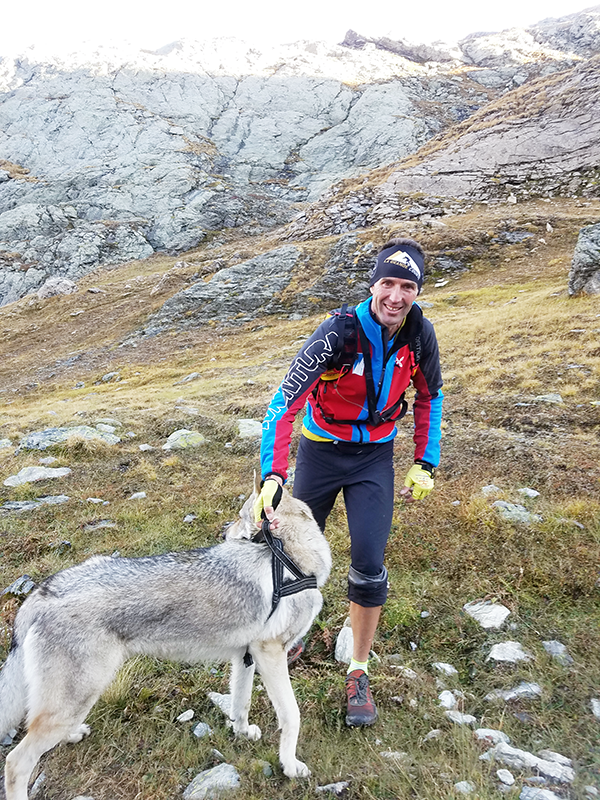
It’s not you, it’s them
The encouragement from locals on the course in the first day is fantastic. There is another side to this that can test your confidence. The race starts on a Sunday, so the locals are out hiking and having a picnic. You will be huffing and puffing your way up a mountain and some six year-old girl with a little dog and her grandparents will be coming down, and you’ll wonder, “How did they get up there?” Just accept that they’re a special breed. You will see locals at all kinds of odd points on the course – 60+ year-old guys at 4am in the middle of a boulder field, a guy running with a dog (I think it was a wolf – he called it “Wolf”) near the top of a mountain, very old guys sitting at a table halfway up Col Losson, people walking through the forest paths between villages at night.
Early pain – why it makes sense
I think I had some knee pain by the second day – but this was only because all the steep climbing with so little “warm-up” in the first 36 hours, pushing hard – it all stressed my glutes and tightened my ITBs. In retrospect. I would make sure I had some massage and stretching on the first evening and again through the next day. Understanding all this, and the fact that you are still in the first and second stages of the race, you may want to consider some strapping, sports tape, strongest compression you have or other support right from the start of the race rather than waiting until something begins to hurt.
Yep, it gets cold
By the first afternoon, you pass in front of a glacier and you get your first icy wind. Then the cold of the first night is a shock, especially when you leave the life base. It’s a little soul-destroying to think about how you might have a handful more of nights like this. You soon learn that it’s important to get warm and rug up before you head out into the night, even if it means you strip off a layer of clothing an hour or less later. Trust me, this is even more important for your mental or emotional state as it is for your physical wellbeing.
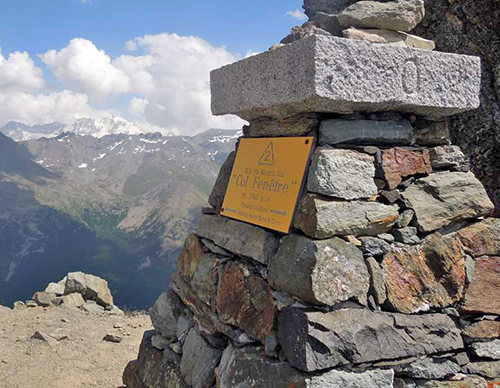
Don’t panic – stop, eat, rest
Even with the race starting a little later this year, I still think it’s smart to have a big meal and a nap at the first life base. Think of it as an investment rather than thinking “do I absolutely need this?” Even if you are within a couple hours of the cut-off – lots of other people will be, too. If you are physically well and uninjured, there is lots of opportunity to get further ahead of the cut-off times. It’s also worth having a stop at Rhêmes Notre-Dame – at least to eat and drink well, rest a little or have a short nap – because you have a very steep climb to a 3000m peak after that (Col Entrelor) and the highest mountain of the course, Col Losson at 3300m.
NOTE: You may also be a little shell-shocked or at least mentally fatigued by the time you get to Rhêmes Notre-Dame. That’s OK, you won’t be the only one. The descent to the checkpoint is so steep that you don’t even see the town of Rhêmes N.D. until you almost jump down onto it. This was a bit of a wake-up call that showed how mentally draining coming down super-steep slopes can be, especially at night where you only have an awareness of the terrain as far as your headlamp or fog allows.
Here’s another reason to rest, eat and regather yourself at Rhêmes N.D. People often ask what the hardest stage of the race is. I think it is all relative – that is, I see people mention later stages of the course, but I think this is because they are more fatigued, sore and sleep-deprived by then. My belief is that the most physically difficult stage is between Valgrisenche or Rhêmes N.D. and Cogne. Mentally, it’s also challenging, as it’s in this section – once you go past the dam and the nice forest trail immediately after you leave the life base at Valgrisenche – that it really begins to hit you just how slow you will be going sometimes.
Two words: Col Losson
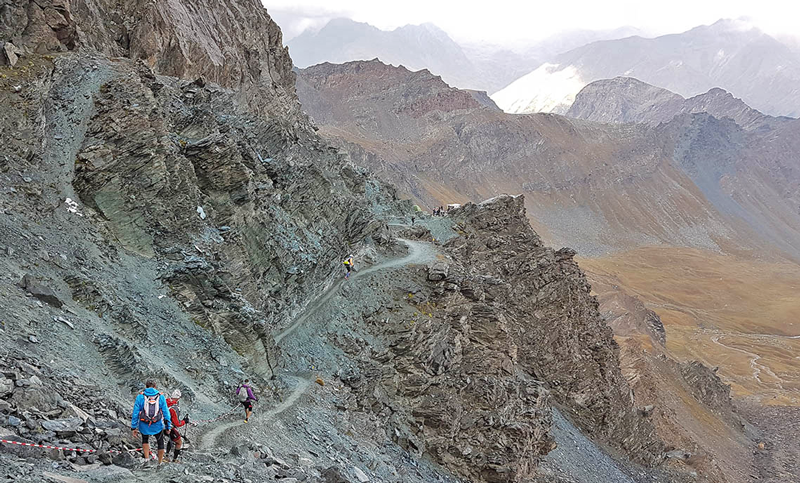
You might not get to Col Losson in the first 24 hours (and that’s OK – lots of runners won’t, and they’ll still finish the race), but it’s still so early in the race that it can mess with your confidence. Some people warn that you should really try to go over it in daylight. It’s a good idea, if you have the option! On the way up, it gets very exposed – and that means it can be hot there if the sun is out because it reflects off all the white rock. It is all very open with loose, powdery dirt near the top. In the dark, it can be very hard to find the trail and you can end up taking the wrong route – or going somewhere you shouldn’t! I think this is the first place where I thought there was some real danger in the course (I know this is all relative – I am agile, but I am also afraid of heights!). It gets worse after the col, as there’s a very narrow, winding little stretch down super-steep loose dirt, hugging a rock face on the way to the Perspex shelter of the checkpoint. If you’re there at night and there is fog or mist, be very careful!
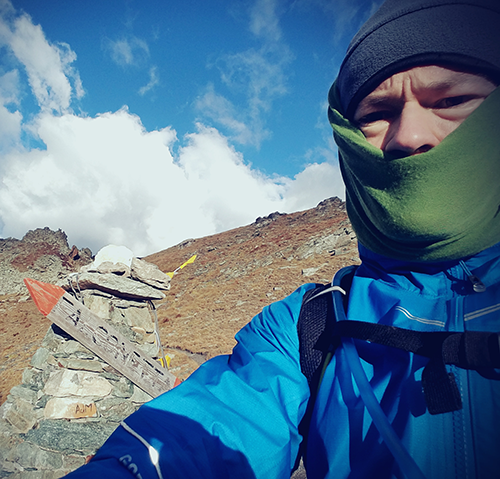
Watch your mouth!
By the start of the second day, lots of people seem to be losing their voice, and some have a sore throat, too. This is the shock of breathing hard at altitude in cold, dry, often dusty air. Be prepared to cover your mouth and nose with a buff near the mountain tops as a means to warm the air and keep it a little moist when you breathe, especially if it’s windy.
Dom Cadden was a media ambassador for the Tor Des Geants. He completed the race in 2017.


